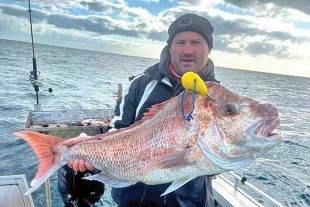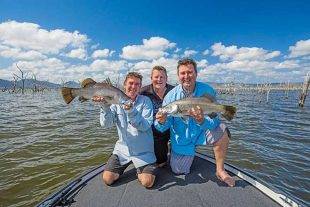THE busy waterways and northerlies made the fishing more difficult than it should have been in and around the Broadwater over the past month.
The future looks better though, with a bit of rain and southeasterly wind to increase the water temperature offshore, which will bring the pelagics out to play. A lumpy swell and strong northerly wind limited offshore trips over the holiday period but when we got out we found quality fish and even a couple of monsters, as the photos show.
Good snapper and moses snapper (formerly moses perch but now officially renamed by Fisheries Queensland) as well as big jew and cod were caught. Mackerel are just starting to show at the time of writing. With all my offshore fishing, I like to give myself a chance of catching a wide variety of species.
I have found the best method for enticing a range of fish is to float line whole pillies. As the pillie slowly floats down, any mackerel in the upper water column will attack the bait violently, but if no mackerel are about, as the pillie nears the bottom, snapper and other reef species are the main catch.
An unweighted live yakka free swimming out the back of the boat is also a good option, especially towards the end of February when the spanish mackerel start to turn up. It is very important to find a good show of bait where you’re going to fish and sometimes this can see you slowly driving over the chosen area for 10 to 20 minutes to find the best spot to anchor.
A good berley trail is essential for a consistent catch rate of mackerel and reef species, with minced frames and pillie pieces best. You just never know what your berley will attract. Over the holidays we used the above method and landed a 1.4m, roughly 40kg black rockcod.
For an old whiting fisherman, it was a big surprise. Back in the estuaries, mud crab captures have been getting better after the rain in January, and this month will see the quality of muddies improve. Over the holidays, the muddies were not full of meat but this month will see them in much better condition after an extra month’s feeding time.
The best locations for a feed of muddies will be the Pimpama River from the mouth to the stockyards and the Aldershots between the north and south arms of the Coomera River on both sides of the main channel. In the Coomera River, the deep water between Hope Harbour and Sanctuary Cove will be ideal.
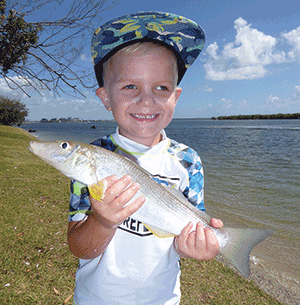
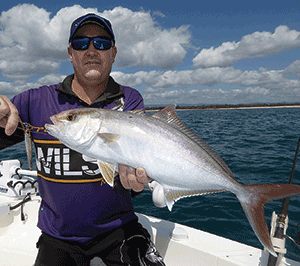
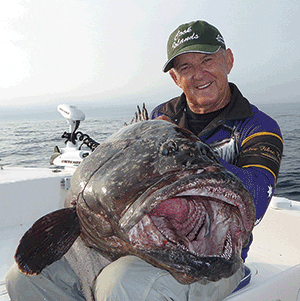
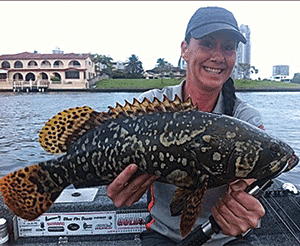
This is great for us whiting fishos because we can drop off a couple of pots on the way up the Nerang to get our next feed of whiting and more frames for the crab pots. The past month has seen whiting catches a little less consistent than normal. We’ve still had no trouble getting a feed but the bite periods have been very erratic.
For an hour or so during the trips the fish will bite their heads off and then go quiet for a while. Whiting are continually on the move looking for food, and this normally means they are feeding over a large area and are taking their time returning to the area around your boat.
It’s very frustrating but the quality of the fish has been good. The water is currently very clean and the whiting are biting much better after dark. If we can get a heap of rain to make the water dirty, we should be able to get a few fish during the day.
Whiting fishing in the Coomera River has been a little quiet but this will improve now the heavy boat traffic in this area has eased.
The big sandbank at the end of Paradise Point and the sandbank on the northern side of Jabiru Island are good places to try.
Yabbies are a good bait because they are plentiful in this area. The past 12 months has been the worst fishing period I have seen in the Seaway and its surrounds. While still holding the odd good fish, we’ve found no big schools of predators chasing bait as we have in the past.
Hopefully things get back to normal once we get some rain that pushes all the bait back downstream into this area. At the moment, I would recommend fishing the Jumpinpin Bar area rather than the Seaway for jew. The odd flathead has been picked up around the Aldershots and this location is an option if you want to have a fish between checking the crab pots.
Mangrove jack fishers have had a great time in the Coomera River and Runaway Bay canals of late. Most have either been flicking soft plastics at the jetties or anchoring up and bait fishing the same jetties. The best time to target these fish with bait is an hour either side of a tide change.
Live herring and strips of mullet or bonito are perfect baits. Mangrove jack will continue to be caught right up until Easter. Patience and persistence is needed to catch one but you will never forget your first jack. Let’s hope this year brings great fishing for all.
‘Til next month, fish for the future.
 Bush 'n Beach Fishing Magazine Location reports & tips for fishing, boating, camping, kayaking, 4WDing in Queensland and Northern NSW
Bush 'n Beach Fishing Magazine Location reports & tips for fishing, boating, camping, kayaking, 4WDing in Queensland and Northern NSW







